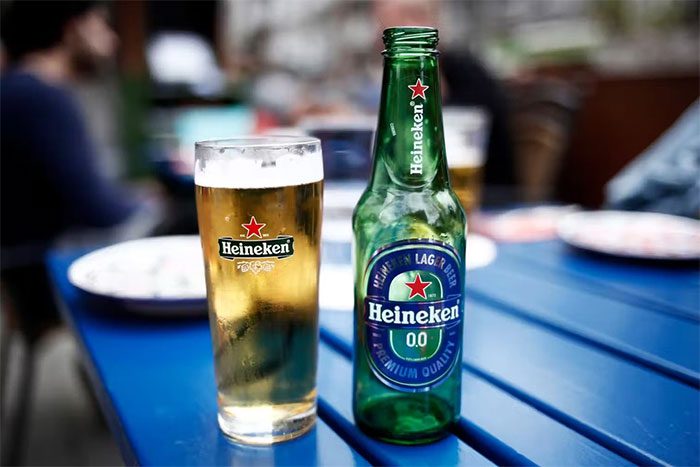Drinking non-alcoholic beer during gatherings with friends and partners is becoming increasingly popular. This trend is especially relevant as governments implement regulations regarding blood alcohol levels for drivers. So, how is non-alcoholic beer produced?
It All Starts with the Fermentation Process
Alcoholic beverages are produced using microorganisms, most commonly yeast, which convert sugars into ethanol (alcohol) during fermentation.
In addition to producing ethanol, fermentation also generates other molecules that contribute to the flavor profile of the product.

Non-alcoholic beer is gradually becoming a popular drink at social gatherings. (Illustrative image: Shutterstock).
Therefore, the fermentation process is an essential part of creating the flavors in beer and wine, and it is crucial for producing low-alcohol or non-alcoholic beverages.
Consequently, the production of both non-alcoholic beer and wine begins with fermentation, after which the alcohol is removed using various techniques.
The two most common methods for producing non-alcoholic beer and wine are filtration and distillation. Both systems employ advanced and expensive technology, which is why they are typically used by large manufacturers.
The first method is membrane filtration, also known as “reverse osmosis.” In this process, beer and wine are pumped under pressure through filters with tiny pores that separate compounds based on molecular size.
Relatively small molecules, such as water and ethanol, will pass through, while larger molecules will not.
Water is continuously added to the mixture of “aromatic” compounds to create the beer or wine. This process continues until all the ethanol is removed.
The second process is distillation, where compounds are separated based on their boiling points. However, this method can alter the flavor of the beer and wine, resulting in a product that no longer resembles the original.
To minimize the impact on flavor, the distillation process used to create non-alcoholic products is conducted under very low pressure and in a vacuum environment.
Although the rise in the production of low-alcohol or non-alcoholic beers reflects consumer preferences, it is also partly due to the increasing variety of craft beers available today.
Craft breweries produce low-alcohol beers without the need for expensive equipment. They achieve this by applying fermentation processes in two primary ways.
In the first method, brewers intentionally reduce the amount of sugar available for the yeast, using less sugar so that the yeast produces less ethanol.
There are various ways to accomplish this, including adjusting the temperature during the mashing process (extracting simple sugars from barley). Brewers can halt the fermentation process before too much sugar is converted into alcohol.
The second method involves using different yeast strains. Thousands of yeast species exist, and some produce very little ethanol. These strains are becoming increasingly popular in the production of low-alcohol beer.
They still deliver the desired aromatic compounds but at a very low alcohol content (less than 0.5%).
While most yeast strains are commercially available, some brewers keep the exact strain they use for producing low-alcohol beer a secret.
Some companies specialize in developing new yeast strains for the brewing market. In addition to utilizing naturally occurring strains, they also employ hybrid strains.
Distinctive Flavors
Creating a low-alcohol or non-alcoholic beer or wine that tastes exactly like high-alcohol varieties is challenging because ethanol contributes significantly to the flavor of alcoholic beverages.
The removal of ethanol and water also leads to the elimination of small molecules and volatile compounds (chemicals that evaporate under normal atmospheric conditions), although producers have made efforts to reintroduce them into the final product.
Similarly, altering the brewing conditions or using unique yeast strains for low-alcohol beer also results in flavors that differ from those obtained through conventional processes.
As a result, non-alcoholic beers often have a distinctive taste, which may even feel unfamiliar to regular alcohol consumers.


















































